Experimental details
Target analytes and solutions: A total of 32 NSO including 17 fentanyl analogs and 15 newly emerging non-fentanyl opioids were selected for this panel. Two solutions were prepared in water: a 1 µg/mL standard mixture containing the 32 target analytes and a 1 ng/mL internal standard mixture containing two deuterated internal standards (fentanyl-D5 and carfentanil-D5). Table 1 lists the 32 target analytes used in this method.
Calibrator preparation: The 1 µg/mL standard mixture containing the 32 target analytes was used to fortify 200 µL of human whole blood. This fresh spiked whole blood mixture was used to prepare a series of 9 calibrator solutions covering concentrations ranging from 1 pg/mL to 100 ng/mL.
Sample preparation: NSO were extracted from the 200 µL spiked whole blood mixtures using a liquid-liquid extraction (LLE) procedure summarized in Figure 2.
Liquid chromatography: HPLC separation was performed on an ExionLC™ system using a Phenomenex Kinetex C18 column (50 × 3.0 mm, 2.6µm, 00B-4462-Y0). Mobile phase A (MPA) and mobile phase B (MPB) were ammonium formate with formic acid and formic acid in methanol and acetonitrile, respectively. The LC gradient and runtime were optimized to enable baseline separation of all the analytes in the panel, including isomeric species. The injection volume was 10 µL and the total LC runtime was 15.5 minutes.
Mass spectrometry: A SCIEX 7500 System equipped with an OptiFlow® Pro Ion Source with an analytical probe and E Lens™ Technology was used. The ionization source was operated with electrospray ionization (ESI) in positive mode. A single acquisition method consisting of 68 MRM transitions (64 for the NSO and 4 for the internal standards) was created using the Scheduled MRM Algorithm Pro in SCIEX OS Software 2.0. Two MRM transitions were monitored for each of the targeted NSO and each sample was injected in triplicate to build a data analysis processing method.
Data analysis: Data processing was performed using SCIEX OS Software. Detection and integration of the peaks from the background was accomplished within the viewing window using the MQ4 algorithm. Quantitative analysis was performed in the Analytics module of the software. Here calibration curves, concentration calculations, assay precision and accuracy statistics were automatically generated.
Optimized LC conditions lead to separation of isomeric species
A diluted, 10 ng/mL neat standard mixture containing the 32 NSO was used for initial method development. Figure 3A shows the chromatographic profile of the NSO panel resulting from the optimized data acquisition method. Baseline separation of the 32 analytes, including fentanyl and non-fentanyl isomeric species, was accomplished by using a combination of appropriate gradient, adequate mobile phase composition and ideal column choice (Phenomenex Kinetex C18). Together, this enabled better retention of the more polar NSO throughout the course of the 15.5 minute long gradient.
A few fentanyl analogs in the panel are isomeric with other analogs and have no unique fragments that can be used for analyte differentiation. That is the case with trans-3-methyl fentanyl and cis-3-methylfentanyl (sharing fragment ions of 202.1 and 105.0 Da), as well as iso-butyryl fentanyl and butyryl fentanyl (sharing fragment ions of 188.1 and 105.0 Da). Figure 3B displays representative extracted ion chromatograms (XICs) for four sets of isomeric fentanyl analogs (trans-3-methylfentanyl and cis-3-methylfentanyl, iso-butyryl fentanyl and butyryl fentanyl, acetyl fentanyl and benzyl fentanyl, and β-hydroxy fentanyl and methoxyacetyl fentanyl). As seen in Figure 3, the optimized LC conditions used in this workflow produced the level of separation needed to correctly distinguish the four sets of isomeric species, including the two sets that share the same fragment ions. Chromatographic separation of these four pairs of analogs from their isomers was critical for accurate identification and quantification.
Optimized data collection using the Scheduled MRM Algorithm in SCIEX OS Software enables robust drug quantification
Control human whole blood samples spiked with the 32 target analytes were prepared at concentrations ranging from 1 pg/mL to 100 ng/mL. These standard human whole blood mixtures were spiked with the internal standard mixture, extracted using the aforementioned liquid-liquid extraction procedure and injected to build a data processing method. The Scheduled MRM Algorithm in SCIEX OS Software was used to optimize the dwell time of each MRM transition, ensuring sufficient data sampling across each peak and providing reliable peak integration, quantification and confirmation for each of the NSO in the panel. Detection and integration of the peaks was performed automatically using the MQ4 Algorithm in the Analytics module of SCIEX OS Software. Analyte concentration and ion ratios were calculated automatically in the software.
The ability to accurately detect trace levels of NPS extracted from human whole blood is critical for a toxicologist’s interpretation of drug testing results and their help in determining the cause of death. The series of calibrator solutions were injected to evaluate the quantification performance of the system and its ability to accurately measure low levels of drugs and their metabolites with a high level of precision and accuracy. Figure 4 shows representative extracted ion chromatograms (XICs) for the two MRM transitions monitored for A) brorphine and B) etonitazene, two highly potent NSO that have been linked to accidental drug overdoses at low concentration. The series of XIC display overlays both the quantifier and qualifier ions for a blank injection and for concentrations ranging from 5 pg/mL (LOD) to 100 ng/mL. Also displayed in Figure 4 is the tolerance in the form of the ion ratio line overlay which helps visualize the confidence levels. The signal shown for 5 pg/mL is well above the blank signal. The signal for 10 pg/mL is the lower limit of quantification (LLOQ). The LLOQ is the lowest concentration level meeting the following standard performance requirements: signal-to-noise ratio (S/N) > 10, calculated concentration accuracy (%bias) within 20%, precision less than 20%, ion ratio acceptance criteria below 20% and calibrators falling on a linear regression curve with an R2 value of at least 0.99. Overall, the developed method provided robust and accurate quantification of the drugs in the panel without any sacrifice or compromise in data quality.
Table 1 summarizes the statistical results obtained for the 32 NSO and includes the LOD and LLOQ for each of the two MRM transitions monitored for each analyte. Also included in the table is the calibration range and linear correlation coefficient (R2), as well as the accuracy and precision at the LLOQ. Reported LLOQ values ranged between 10 to 50 pg/mL for the 32 analytes in the panel. The accuracy and precision of measurements ranged from 80.50-116.64% of target and 0.42-17.80%, respectively. The excellent accuracy and precision were observed over the entire concentration range, including at the LLOQ. Overall, the developed method showed excellent reproducibility and linearity, proving the robustness of the developed method and quantitative performance of the SCIEX 7500 System even at low concentration levels for each of the targeted NSO in this study.
Figure 5 shows the resulting calibration curves for the fentanyl analogs (A) and non-fentanyl analogs (B) in the panel. Excellent linearity was observed across the concentration ranges analyzed with R2 values greater than 0.99 for all of the NPS in the panel.
Enhanced sensitivity leads to low level detection of potent NSO in case samples
The robustness of the method and the quantitative performance of the SCIEX 7500 System were further investigated by analyzing ten discarded authentic postmortem case samples from subjects suspected of NPS ingestion resulting in accidental overdoses. These biological specimens were prepared using the aforementioned liquid-liquid sample extraction method and analyzed using the developed acquisition method. The concentrations of the positively detected NSO in the postmortem samples were calculated automatically in SCIEX OS Software using the calibration curves generated for each of the 32 NPS. Each case sample was run in triplicate.
Figure 6 shows the results of the successful detection of one NSO and its metabolite: isotonitazene and 5-aminoisotonitazene, as well as fentanyl and four of its analogs/metabolites: beta-hydroxy-fentanyl, norfentanyl, 4-ANPP and acetyl fentanyl. These results are from postmortem case sample #6 at concentrations of 1434.33, 7.93, 599.10, 9756.67, 147.69 and 1465.00 pg/mL, respectively. The displayed XIC in Figure 6A shows the seven analytes positively identified in the postmortem sample. The results summary table shown in Figure 6B lists the analyte peak name, retention time, area and calculated concentration of each of the positively identified analytes. It also shows ion ratio, precursor mass, and the accuracy and concentration acceptance criteria.
A few observations can be drawn from the results highlighted in the summary table. First, detection of the potent NSO isotonitazene is supported by the presence of one of its metabolites, 5-aminoisotonitazene, at low (<10 pg/mL) concentration. Second, detection of fentanyl is confirmed by the presence of its metabolites (beta-hydroxy-fentanyl, norfentanyl) as well as synthesis precursors (e.g. 4-ANPP) and by-products (e.g. acetyl fentanyl). This data might suggest that the drug ingested by the subject originated from the illicit market. Although the presence of fentanyl might have been a contributing factor to the accidental overdose, the presence of the potent NSO isotonitazene could support the case of combined opioid drug toxicity leading to death.
The potency of some non-fentanyl analog NSO showcased in this workflow is a true testament of their ability to cause fatal outcomes. Figure 1 shows the detection of four analytes that were detected in postmortem case sample #1 which was analyzed using the described method. The XIC shows the successful detection of fentanyl at 250.17 pg/mL and two NSOs: isotonitazene (317.80 pg/mL) and its metabolite 5-aminoisotonitazene (44.79 pg/mL), and bromadol, (9644.67 pg/mL). The presence of fentanyl alone at 250 pg/mL might not be sufficient to explain the overdose. However, the two potent non-fentanyl analog NSOs, isotonitazene and bromadol, can contribute to additive opioid effects leading to a combined drug overdose scenario.
The results from the analysis of the postmortem case samples demonstrated the robustness of the developed method and showed that the Scheduled MRM Algorithm in SCIEX OS Software 2.0 on the SCIEX 7500 System enabled sensitive detection and accurate quantification of trace levels of potent NSO. The information that can be interpreted from the results offers valuable insight into the causation of accidental death. As seen with the case samples presented, the sensitivity of the SCIEX 7500 System can support the necessary evidence in postmortem cases where combined intake of high potency drugs at low concentration is responsible for or contributes to an unintentional drug overdose.
Conclusions
A robust and sensitive drug screening workflow for the analysis of 32 potent NSO was successfully developed using the SCIEX 7500 System. The combination of optimized LC conditions with the use of the Scheduled MRM Algorithm in SCIEX OS Software enabled robust and sensitive quantification and identification of isomeric species with a high level of precision and accuracy, even at trace level concentrations The applicability of the developed workflow to accurately detect low concentrations of NSO in authentic forensic samples was further evaluated for the analysis of postmortem case samples from a subject suspected of accidental drug overdose. The results indicate the high quantification performance of the method and its ability to detect low levels of NSO, providing the necessary evidence for toxicologists and medical examiners to determine the cause of death. Overall, the remarkable quantification performance of the SCIEX 7500 System enabled accurate detection of potent NSO at concentrations that were not previously achievable, providing a means to monitor ultra-potent NSO in overdose scenarios. The adaptation of this robust method to postmortem case samples from a subject suspected of combined NSO intake, using the SCIEX 7500 System, offers a valuable insight into the causation of accidental overdoses.
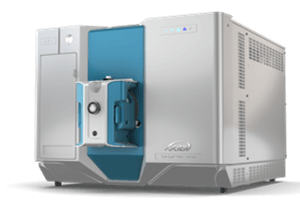
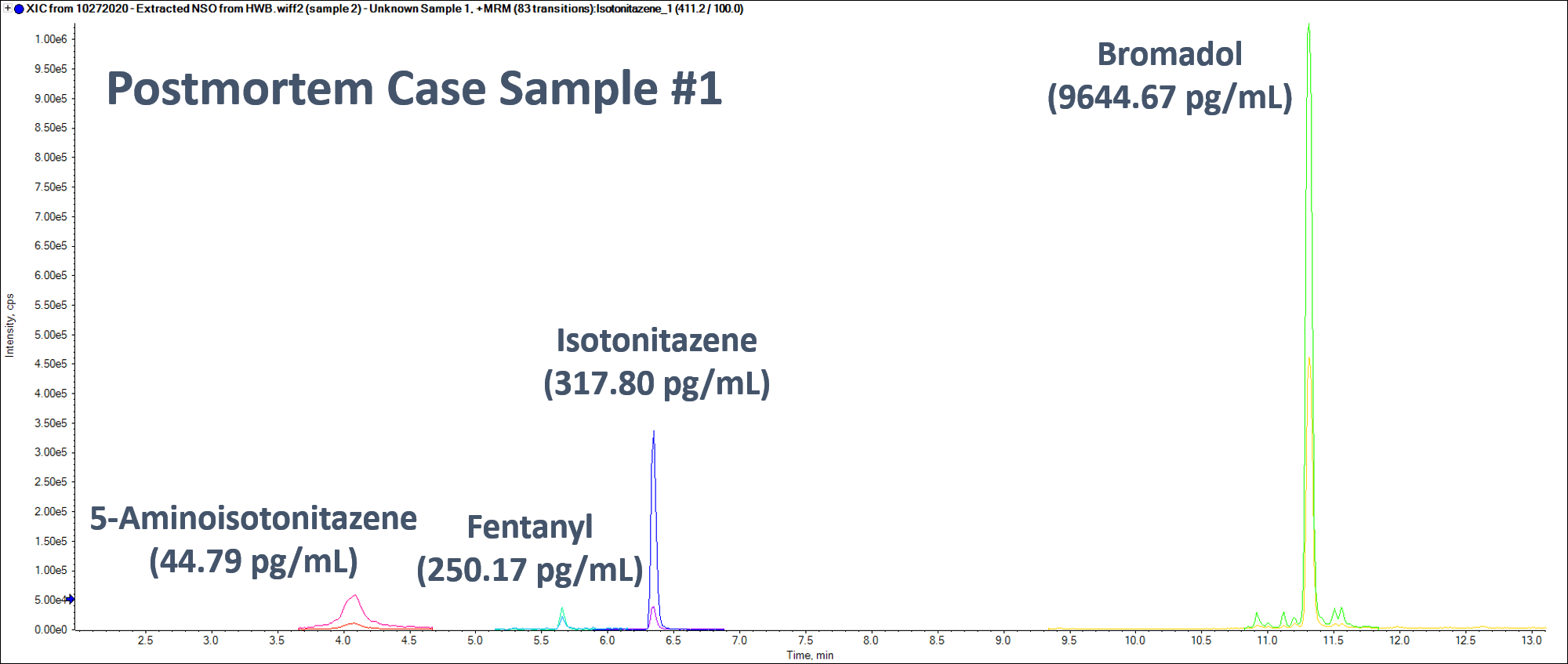 Click to enlarge
Click to enlarge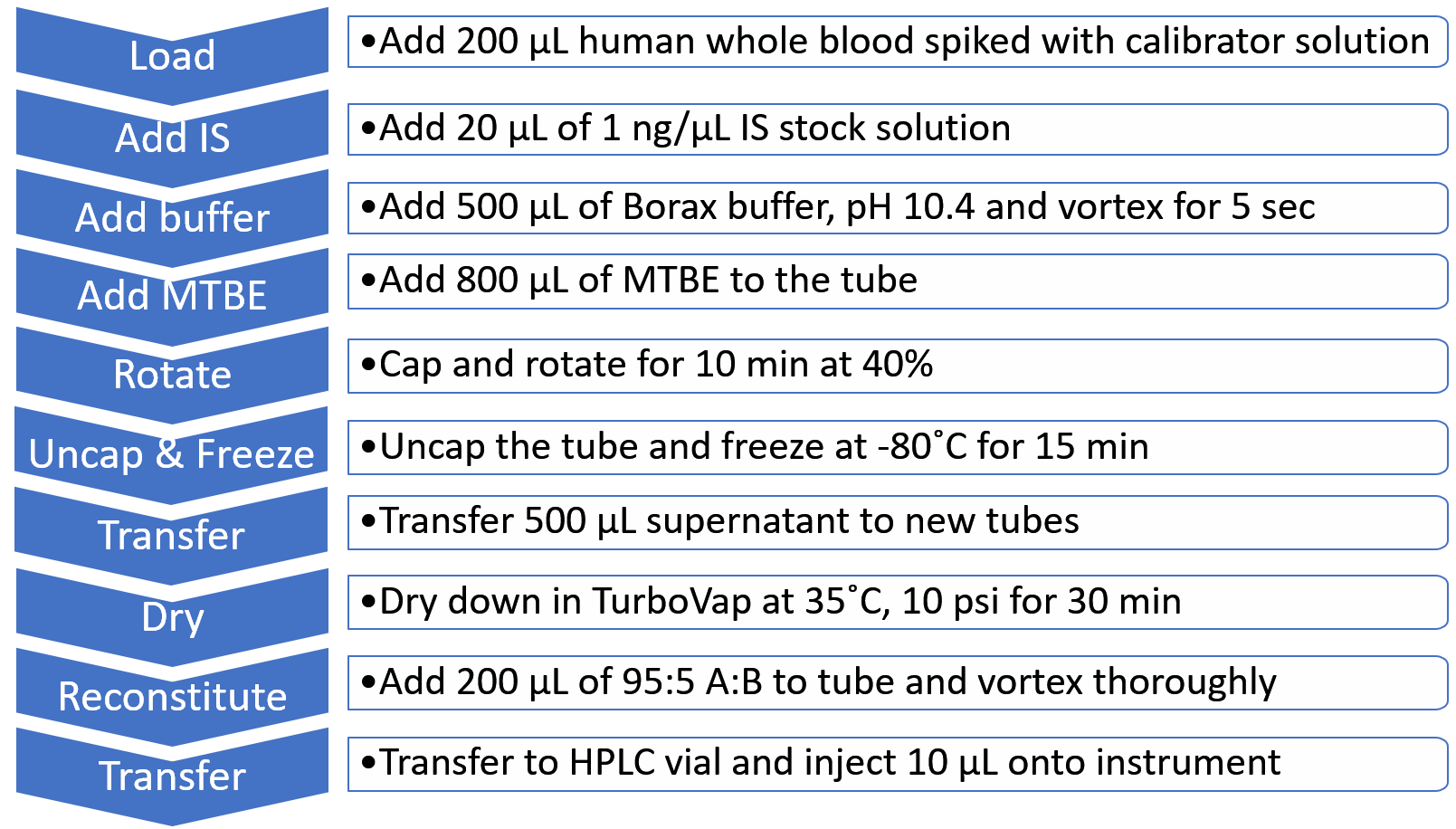 Click to enlarge
Click to enlarge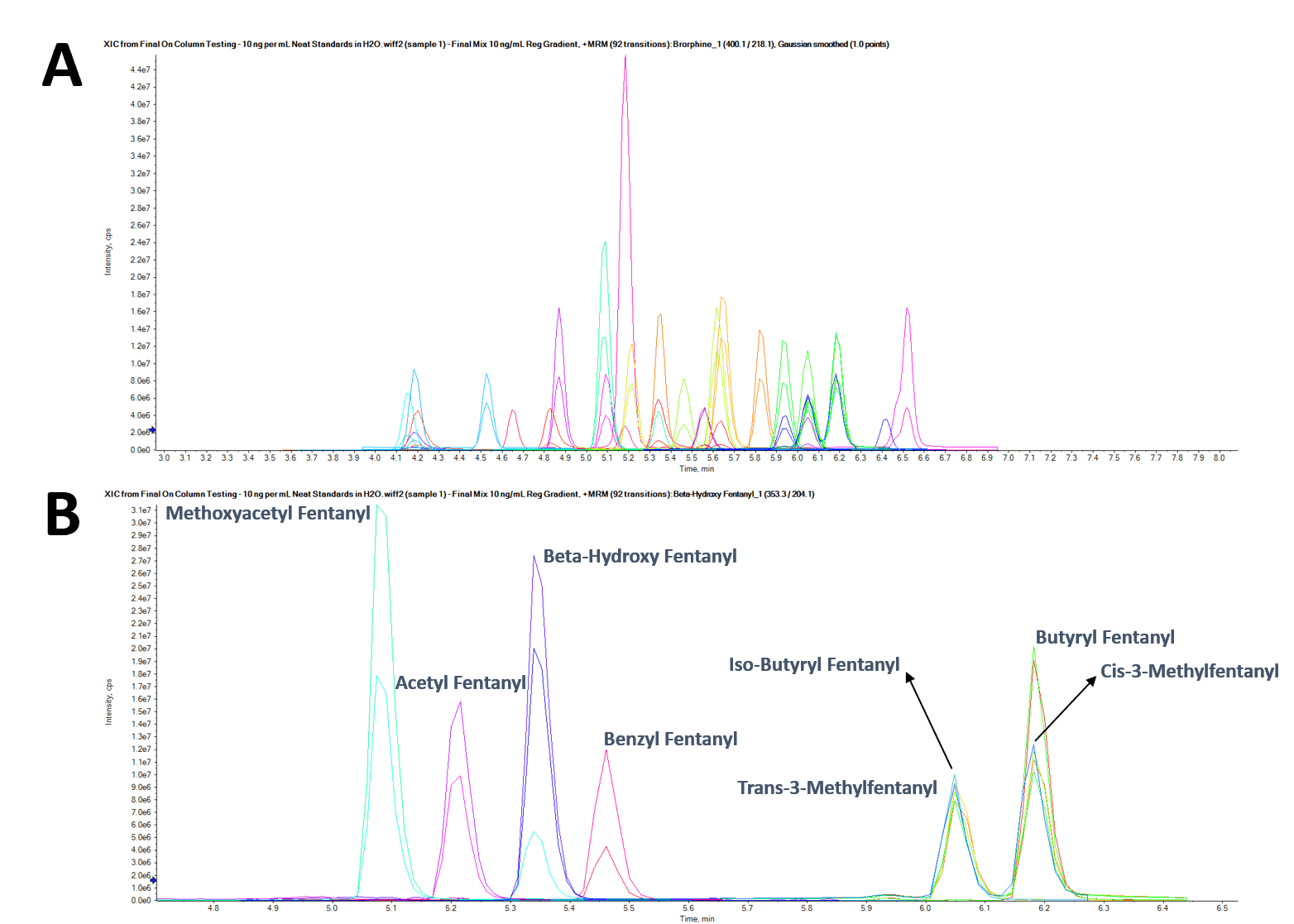 Click to enlarge
Click to enlarge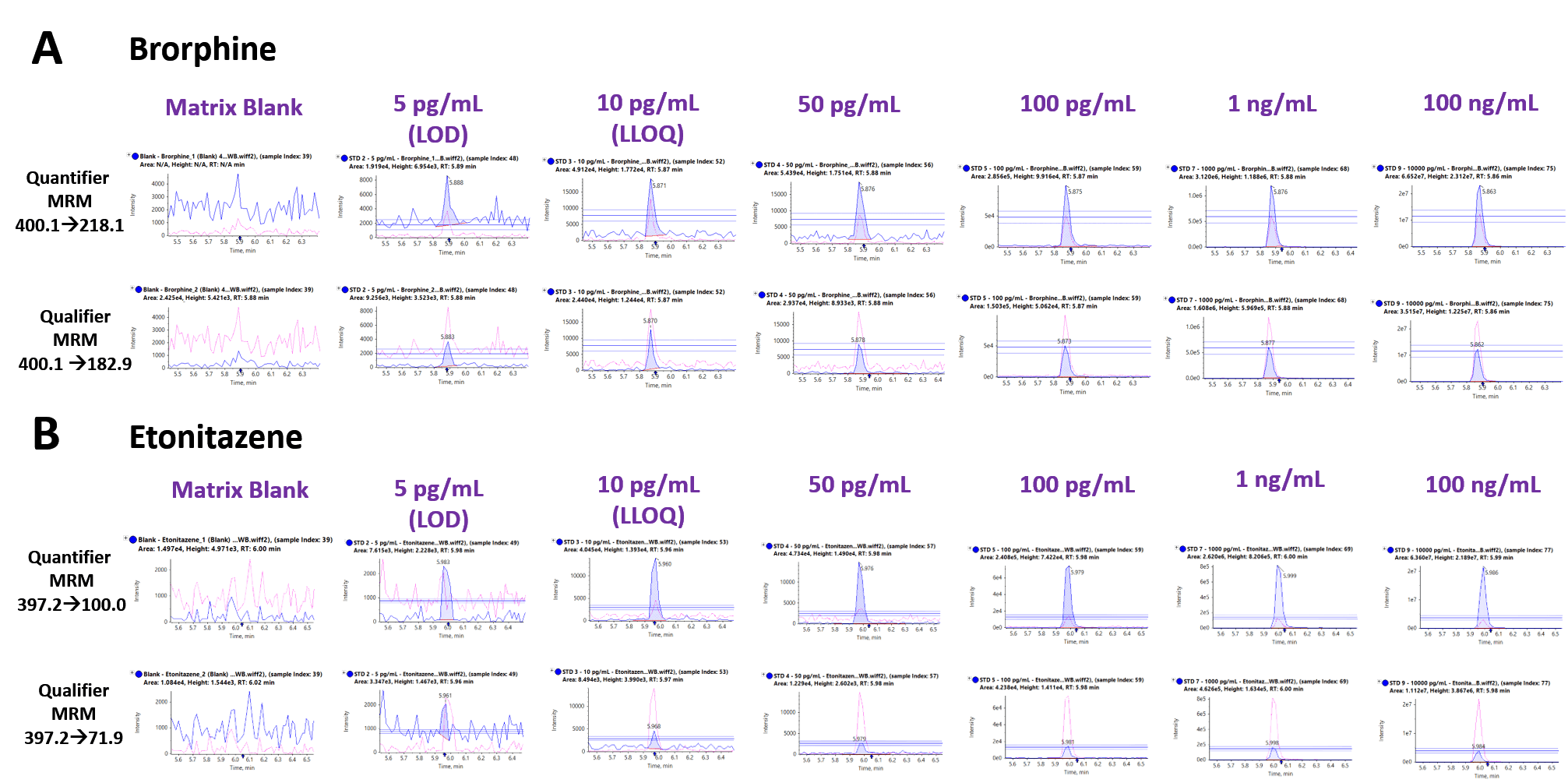 Click to enlarge
Click to enlarge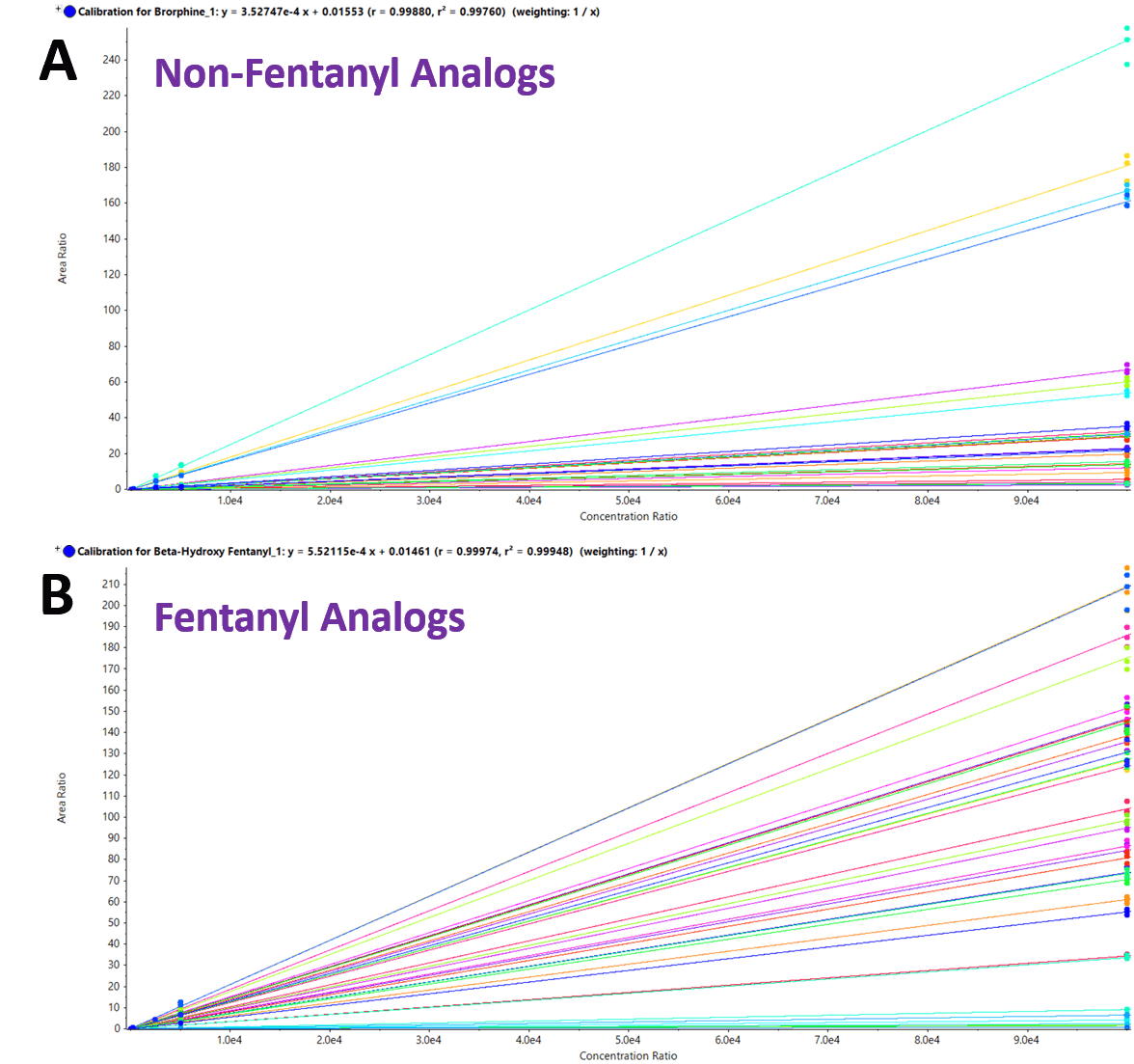 Click to enlarge
Click to enlarge Click to enlarge
Click to enlarge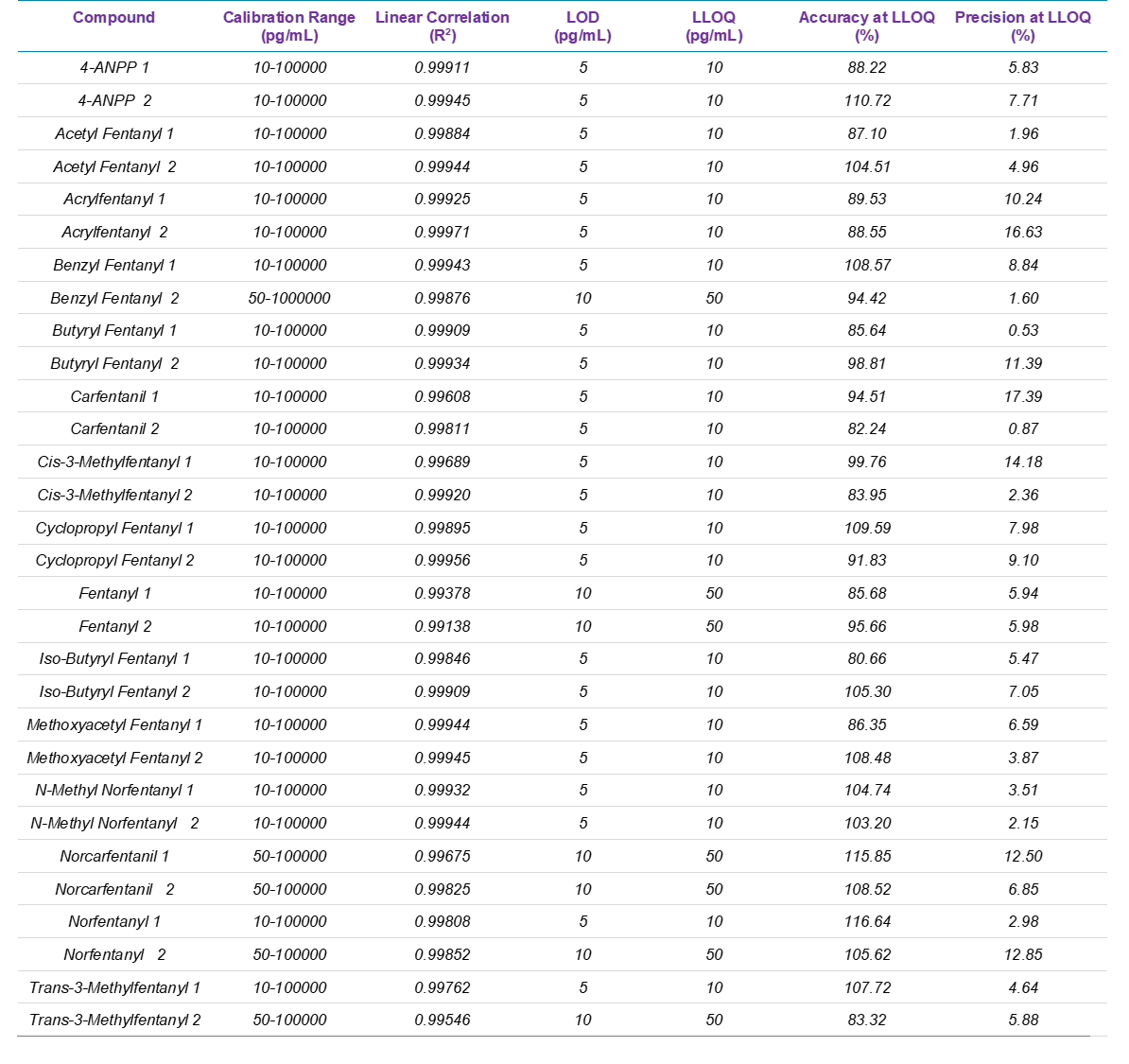 Click to enlarge
Click to enlarge